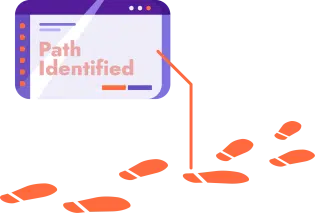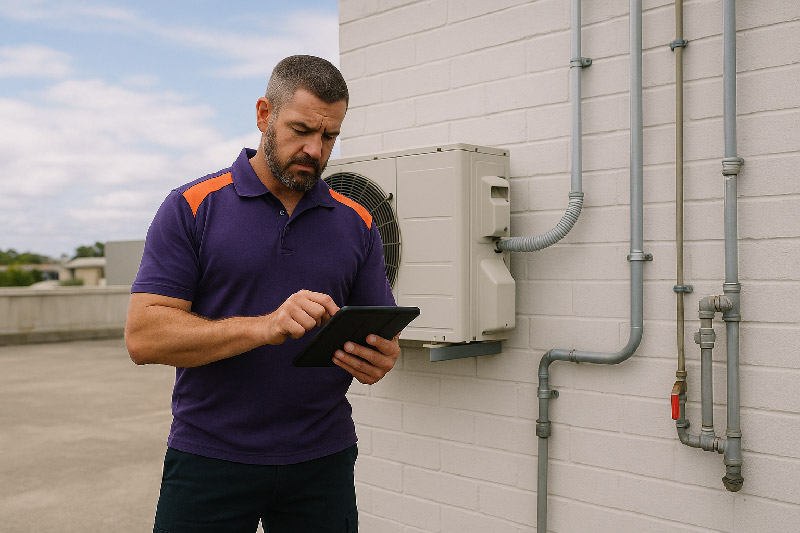Optimizing Profitability with HVAC Pricing Strategy: A Guide to Success

Imagine a world where the perfect balance of pricing not only powers your HVAC business’s profitability but also shapes how customers perceive the very air they breathe. Welcome to the realm of HVAC pricing strategy, where smart pricing isn’t just a number—it’s the art of engineering value and success.
In this ever-evolving market, HVAC companies must navigate a complex landscape of changing customer expectations, competitive pressures, and fluctuating costs. Crafting a well-structured pricing strategy becomes the compass that guides these businesses to navigate these challenges successfully. An effective HVAC pricing strategy involves meticulous research, thorough analysis, and strategic decision-making to ensure that every service provided and every product offered resonates with both customers’ needs and the company’s financial goals.
At its core, a well-planned pricing strategy in HVAC operations is the key to unlock a multitude of benefits. It doesn’t just serve as a mere revenue generator, but rather, it’s a powerful tool that shapes the trajectory of an HVAC company’s growth and sustainability.
With the right pricing approach, HVAC companies can achieve a competitive advantage that sets them apart from their rivals. By staying attuned to market conditions, understanding customer demands, and keeping a pulse on the competition, companies can position themselves as industry leaders, driving customer loyalty and capturing market share.
Moreover, an optimized pricing strategy enables HVAC companies to maximize their profits without compromising on customer satisfaction. It strikes the delicate balance between offering competitive rates and ensuring that the quality of service remains uncompromised. This equilibrium not only boosts the bottom line but also fosters positive customer experiences that become the foundation of long-lasting relationships.
Furthermore, managing and optimizing HVAC pricing can result in efficient resource allocation. By tailoring prices during peak and off-peak periods, businesses can better align their workforce and operational capacity, eliminating wastage and streamlining efficiency.
The importance of a well-planned pricing strategy transcends short-term gains; it becomes the cornerstone of long-term growth and expansion. A strategic approach to pricing empowers HVAC companies to adapt swiftly to changing market trends, emerging technologies, and evolving customer preferences. As the industry shifts, those who embrace dynamic pricing models can embrace new opportunities and stay ahead in this competitive arena.
As we embark on this journey into the realm of HVAC pricing strategy, we will explore a wide array of techniques, from conducting in-depth market research to leveraging cutting-edge technology, all designed to empower commercial HVAC companies to engineer their success. By effectively managing and optimizing HVAC pricing, businesses can breathe life into their operations, energize their profitability, and elevate their customer relationships to new heights. Let’s unlock the true potential of HVAC pricing and set a course towards an exciting future of growth and prosperity in this dynamic industry.
Understanding HVAC Pricing: The Key to Profitable Operations
In the world of HVAC, pricing plays a pivotal role in shaping the business model and determining its success. The right pricing strategy can be the difference between a thriving, profitable operation and one that struggles to stay afloat. It directly influences profitability, customer satisfaction, and business growth, making it a critical aspect of any HVAC company’s operations.
First and foremost, pricing is the primary driver of profitability in the HVAC industry. Setting the right prices ensures that the company covers its operational costs while generating sufficient margins to remain competitive and sustainable. An effective pricing strategy strikes the perfect balance between attracting customers with reasonable rates and maximizing revenue streams for the business.
Moreover, pricing significantly impacts customer satisfaction. When customers perceive that they are getting fair value for their investment in HVAC products and services, they are more likely to be satisfied with their experience. This positive perception can lead to increased customer loyalty, repeat business, and positive word-of-mouth referrals, ultimately bolstering the company’s reputation and market position.
Beyond short-term gains, pricing also plays a pivotal role in long-term business growth. An optimized pricing strategy allows HVAC companies to allocate resources efficiently, particularly during peak and off-peak seasons. By managing demand through strategic pricing adjustments, businesses can better plan their operations, minimize waste, and maintain consistent service levels, contributing to steady and sustainable growth.
In developing and implementing pricing strategies, field service managers play a vital role. These managers are on the front lines, directly interacting with customers, and understanding their needs. They gather valuable insights into market dynamics, customer preferences, and competitive pressures, which are crucial for devising effective pricing models.
Field service managers collaborate closely with the finance and marketing teams to analyze cost structures, competitor pricing, and customer feedback. By incorporating this comprehensive understanding, they can create pricing strategies tailored to meet both customer demands and business objectives.
Furthermore, field service managers are responsible for effectively communicating pricing changes to the field technicians and sales teams. They ensure that the implementation of pricing strategies aligns with the company’s overall goals and customer service standards. Regular monitoring and evaluation of pricing effectiveness fall within their domain, allowing them to make timely adjustments and seize opportunities to enhance profitability and customer satisfaction.
Key Strategies and Tips for Effective HVAC Pricing
Unlocking the secrets to effective HVAC pricing can be a game-changer for any heating, ventilation, and air conditioning company. From conducting market research to leveraging technology, join us on a journey to discover how the right pricing approach can revolutionize your HVAC operations and drive your business towards success. Let’s dive in and unlock the key to profitable HVAC pricing!
Conducting thorough market research:
Market research helps HVAC companies understand the dynamics of their target market, including customer preferences, competitors’ pricing strategies, and industry trends. By analyzing this data, companies can identify opportunities to differentiate themselves, tailor pricing to meet customer demands, and set competitive rates that attract customers while maintaining profitability.
Real-life example: A small HVAC company conducts market research and discovers that their competitors charge higher rates for emergency services during weekends. By offering competitive rates for weekend emergencies, the company attracts new customers and gains a competitive edge.
Understanding your costs (material, labor, overhead):
A comprehensive understanding of costs is essential for setting appropriate pricing. HVAC companies need to consider the costs of materials, labor, and overhead expenses to ensure they cover their expenses and make a profit. Accurate cost analysis enables companies to avoid underpricing and potential losses.
Real-life example: An HVAC business accurately calculates its labor and material costs for a specific installation project. They set a competitive price while ensuring a reasonable profit margin, leading to increased customer satisfaction and financial success.
Choosing the right pricing model (hourly rates vs. flat fees):
Choosing the appropriate pricing model depends on the type of service being offered. Hourly rates may work well for service calls or troubleshooting, while flat fees may be more suitable for standardized services like maintenance contracts. Selecting the right model simplifies the pricing process for customers and provides transparency.
Real-life example: An HVAC company offers maintenance contracts at a flat fee, simplifying the pricing for customers and encouraging them to sign up for long-term services, leading to recurring revenue for the business.
Setting competitive but profitable rates:
Finding the right balance between competitiveness and profitability is crucial. Setting rates too low may attract customers, but it can also lead to financial losses. On the other hand, overpricing may drive customers away. Companies need to research the market, understand customer perceptions, and set rates that provide value to customers while maintaining healthy profit margins.
Real-life example: A mid-sized HVAC company benchmarks its prices against competitors and ensures that their rates are competitive. As a result, they attract a larger customer base, which leads to increased revenues and growth opportunities.
Calculating profit margins and markup:
Profit margins and markup help determine how much profit is added to the cost of providing HVAC services. Companies must strike a balance between reasonable profit margins and competitive pricing to ensure profitability and customer satisfaction.
Real-life example: An HVAC business increases its profit margins slightly while keeping pricing competitive. This strategic adjustment results in increased profitability without compromising customer loyalty.
Creating professional and accurate estimates:
Providing customers with professional and accurate estimates inspires confidence in the HVAC company’s reliability and expertise. Transparent estimates that outline the scope of work and associated costs help customers make informed decisions and reduce the likelihood of disputes.
Real-life example: A reputable HVAC company provides detailed and accurate estimates for a complex installation project. The clear breakdown of costs and professionalism in the estimate convinces the customer to choose their services over competitors.
Using technology to aid in pricing and cost tracking:
Utilizing technology, such as HVAC software, can streamline pricing processes, make it easier to price HVAC jobs, and utilize cost tracking. Specialized software can help in estimating, invoicing, and managing expenses, leading to greater efficiency and accuracy in pricing.
Real-life example: A large HVAC company implements HVAC-specific software that automates pricing calculations and cost tracking. This enables faster response times to customer inquiries and allows technicians to focus more on service quality, leading to improved customer satisfaction and increased business referrals.
By implementing these strategies and tips, HVAC companies can optimize their pricing approach, stay competitive, and foster business growth while ensuring profitability and customer satisfaction.
Leveraging Technology for Efficient HVAC Pricing
FieldInsight is a powerful technology platform that offers comprehensive solutions for managing and optimizing HVAC pricing. Its array of features brings automation, real-time data tracking, and predictive analytics to HVAC companies, revolutionizing how they handle their pricing strategies.
Real-time cost tracking:
FieldInsight enables HVAC companies to track costs in real-time, providing accurate insights into material expenses, labor costs, and other operational overheads. With this real-time visibility, businesses can make informed decisions on pricing, ensuring that their rates are always aligned with current cost structures.
Automated estimating:
FieldInsight streamlines the process of generating estimates for HVAC projects. By automating the estimation process, companies can create professional and accurate quotes for customers faster, improving response times and customer satisfaction. The system can factor in all relevant costs and profit margins to ensure that quotes are both competitive and profitable.
Predictive analytics:
FieldInsight employs predictive analytics to forecast demand patterns and trends in the HVAC market. By analyzing historical data and industry insights, the platform can help companies anticipate fluctuations in demand and plan their pricing strategies accordingly. This ensures that companies are well-prepared to handle peak seasons and capitalize on opportunities for increased revenue.
Benefits of FieldInsight’s features in managing and optimizing HVAC pricing:
a. Enhanced Efficiency: FieldInsight’s automation of estimating and cost tracking reduces manual workloads, allowing HVAC companies to focus on delivering quality service rather than spending excessive time on administrative tasks.
b. Improved Accuracy: The platform’s real-time cost tracking ensures that pricing decisions are based on accurate and up-to-date information, preventing the risk of underpricing or overpricing services.
c. Competitive Advantage: By utilizing predictive analytics, companies can proactively adjust pricing to remain competitive in the market, attracting more customers and gaining an edge over competitors.
d. Increased Profitability: With automated estimating and real-time cost tracking, HVAC companies can optimize their pricing for maximum profitability, helping them secure healthy profit margins without compromising customer satisfaction.
e. Customer Satisfaction: Efficient and accurate estimating leads to quicker response times and transparent pricing, ultimately enhancing customer satisfaction and trust in the company’s services.
f. Business Growth: By leveraging FieldInsight’s data-driven insights and automation, HVAC companies can streamline their operations, reduce costs, and make more strategic pricing decisions, contributing to long-term business growth and success.
Technology, such as FieldInsight, offers a wealth of benefits for managing and optimizing HVAC pricing. From real-time cost tracking and automated estimating to predictive analytics, these features empower HVAC companies to make data-driven pricing decisions that enhance efficiency, profitability, and customer satisfaction, ultimately driving their businesses towards greater success.
The Impact of Effective Pricing on HVAC Business Success
Effective HVAC pricing is a fundamental pillar for driving business success in the heating, ventilation, and air conditioning industry. By strategically managing pricing strategies, companies can achieve a multitude of positive outcomes that contribute to their overall growth and prosperity.
- Improved Profitability: Properly managed pricing strategies ensure that HVAC companies generate sufficient revenue to cover their operational costs and achieve healthy profit margins. By considering the costs of labor, materials, overhead, and other expenses, companies can set appropriate pricing levels that result in improved financial performance. This, in turn, allows businesses to invest in equipment upgrades, employee training, and innovative solutions to stay competitive and deliver top-notch service.
- Increased Customer Satisfaction: Pricing directly impacts how customers perceive the value of HVAC services. When prices are competitive and align with the quality of work provided, customers feel they are getting good value for their investment. Transparent and fair pricing practices build trust and foster positive relationships between HVAC companies and their clients. Satisfied customers are more likely to recommend the business to others, leading to word-of-mouth referrals and an expanding customer base.
- Business Growth and Expansion: As HVAC companies effectively manage their pricing and offer compelling value propositions, customer loyalty increases. Repeat business and positive customer reviews drive the growth of the customer base. The growing customer pool provides a strong foundation for the business to expand its service offerings, target new markets, and explore opportunities for geographical expansion.
- Adaptation to Market Trends: The HVAC industry is subject to various market trends and external factors, such as changes in technology, energy efficiency standards, and environmental regulations. Effective pricing strategies allow companies to respond to these trends and make necessary adjustments. For instance, the rising demand for energy-efficient HVAC systems may lead companies to offer competitive pricing for eco-friendly solutions, giving them an edge in the market.
- Meeting Customer Expectations: In today’s consumer-driven landscape, customers expect transparent pricing, accurate estimates, and flexible options. HVAC companies that continuously optimize their pricing strategies can meet these expectations effectively. By incorporating customer feedback and leveraging data analytics, businesses can tailor pricing models to better align with customer needs, preferences, and budget constraints.
- Resource Optimization and Operational Efficiency: Effective pricing enables HVAC companies to manage demand and allocate resources efficiently. During peak seasons, higher pricing can incentivize customers to schedule services during less busy periods, ensuring a more balanced workflow and optimizing the use of available resources. This results in improved operational efficiency, reduced downtime, and enhanced customer service.
- Competitive Advantage: Companies that actively optimize their pricing strategies position themselves as agile and customer-focused entities in the market. This proactive approach gives them a competitive advantage over competitors that may rely on static pricing models. By staying abreast of market changes and aligning their offerings with customer demands, HVAC businesses can set themselves apart and stand out in a crowded industry.
In conclusion, effective HVAC pricing is a cornerstone for achieving business success, encompassing improved profitability, increased customer satisfaction, and long-term growth opportunities. Continuously adapting and optimizing pricing strategies based on market trends, customer expectations, and operational needs empowers HVAC companies to thrive in an ever-evolving industry, paving the way for sustainable success and a bright future.
Key takeaways for HVAC companies
This HVAC pricing guide highlights the critical role of effective HVAC pricing in driving success in HVAC operations. It emphasizes that a well-planned pricing strategy leads to improved profitability, increased customer satisfaction, and business growth.
By understanding market dynamics, accurately calculating costs, choosing appropriate pricing models, and leveraging technology like FieldInsight, HVAC companies can optimize their pricing approaches, gain visibility over overhead costs, implement HVAC pricing models, and adapt to changing market trends and customer expectations.
Importance of Effective HVAC Pricing:
- Improved Profitability: Proper pricing ensures that HVAC companies cover their costs and generate healthy profit margins, allowing for business growth and investment.
- Increased Customer Satisfaction: Competitive and transparent pricing fosters customer trust and loyalty, leading to positive word-of-mouth and repeat business.
- Business Growth: Optimized pricing attracts more customers and lays the foundation for expansion into new markets.
- Adaptation to Market Trends: Effective pricing strategies enable companies to respond to changing market dynamics and customer demands.
- Resource Optimization: Strategic pricing helps manage demand and resource allocation, enhancing operational efficiency.
Competitive Advantage: Continuously optimizing pricing gives HVAC companies a competitive edge in the market.
For service managers or HVAC business owners, discover how FieldInsight can revolutionize your HVAC pricing needs. From pricing HVAC jobs, to HVAC flat rate pricing or the cost of materials, you can gain control over your budgeting and costs.
Visit FieldInsight to explore our comprehensive solution for pricing optimization, real-time cost tracking, HVAC equipment allocation, HVAC technician scheduling, automated estimating, and predictive analytics. Unlock the key to success in your HVAC operations with FieldInsight today!
What You Should Do Now
- Book a Demo. You’ll be in touch with an automation expert who has worked in this space for over 5 years, and knows the optimal workflow to address your needs.
- If you’d like access to free articles about managing HVAC workflows, go to our blog.
- If you know someone who’d enjoy reading this page, share it with them via email, Linkedin, Twitter, or Facebook.









